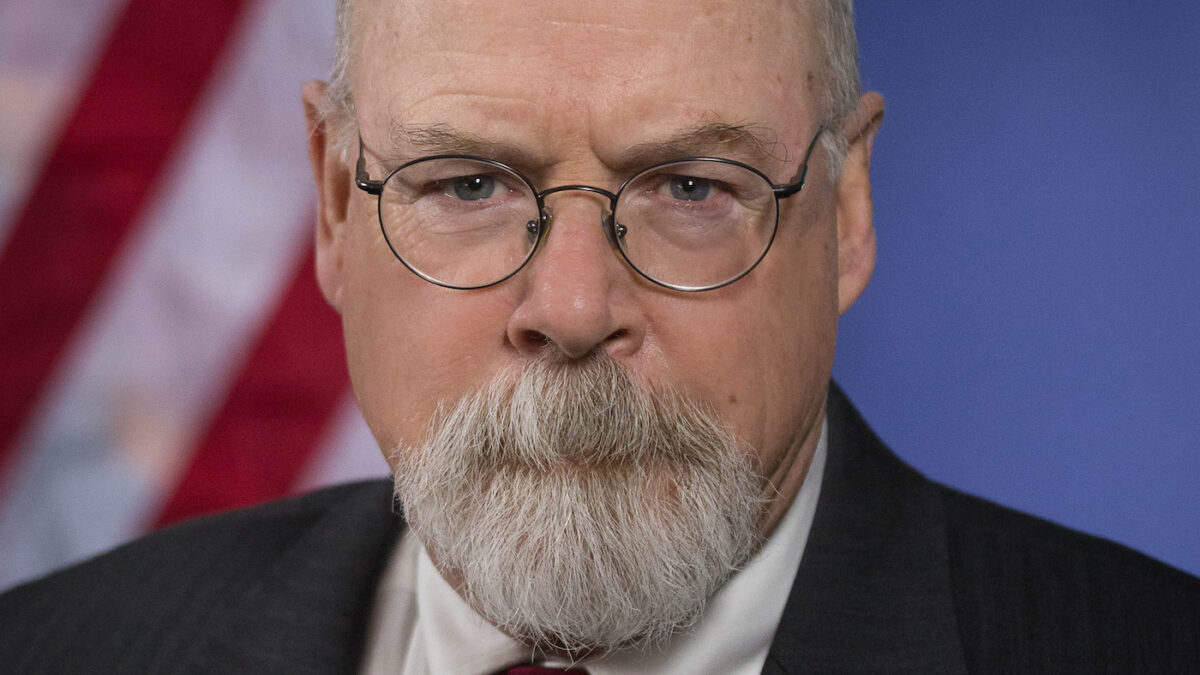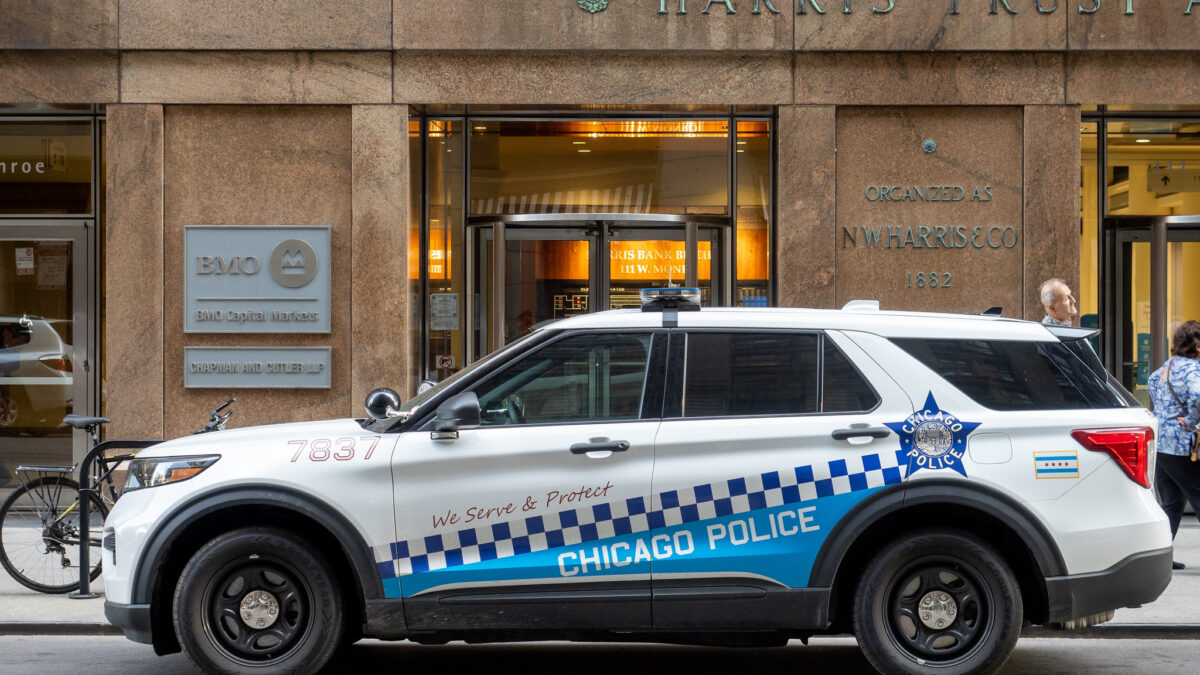Under the guise of reporting the findings of their supposed month-long review of John Durham’s investigation, The New York Times’ top three Russia-collusion hoaxers, Charlie Savage, Adam Goldman, and Katie Benner, launched a preemptive assault on Durham and former Attorney General William Barr in anticipation of the release of the special counsel report.
Thursday’s article, “How Barr’s Quest to Find Flaws in the Russia Inquiry Unraveled,” proves one part chutzpah and two parts mendacity, as these top six takeaways establish.
1. You Going To Believe the Media — or Evidence?
In their Thursday tale, the Times trio opened by declaring that Special Counsel Durham’s investigation into Crossfire Hurricane “failed to find wrongdoing in the origins of the Russia inquiry.” Then, to supposedly prove their “Russia inquiry unraveled” narrative, the authors declared it so by fiat.
“Mr. Durham’s work is coming to an end without uncovering anything like the deep state plot alleged by Mr. Trump and suspected by Mr. Barr,” the Times proclaimed, telling readers that the probe “went unsuccessfully down one path after another…”
The Times doesn’t have a clue what Durham “uncovered,” being privy only to what some defense attorneys and other unnamed “sources” revealed about distinct aspects of the probe. But with the release of Durham’s report forthcoming, the authors seek to prime the public to believe it will be a flop.
But it doesn’t take access to inside information or Durham’s final report to know that the special counsel’s office uncovered “wrongdoing in the origins of the Russia inquiry.” The criminal case against Igor Danchenko, the Russian national source of the Steele dossier, for allegedly making false statements, already “confirmed that Crossfire Hurricane was never properly predicated and that instead, politics prompted the targeting of Donald Trump’s presidential campaign.”
After learning in 2008 that “Danchenko allegedly told a colleague he knew people who would buy classified information,” the FBI — rather than open a “full investigation” into Danchenko — initiated only a “preliminary investigation.” The FBI only converted the “preliminary investigation” “into a ‘full investigation’ after learning that the defendant (1) had been identified as an associate of two FBI counterintelligence subjects and (2) had previous contact with the Russian Embassy and known Russian intelligence officers.”
In contrast, the FBI opened a “full investigation” into Trump based on the more amorphous claim that in May 2016, a then-Trump campaign adviser, George Papadopoulos, suggested the Russians had dirt on Hillary Clinton.
The FBI’s failure to launch an investigation into Clinton crony Charles Dolan likewise confirms that the initial targeting of Trump suffered from political influence. Again, the public already has access to the relevant evidence from the Danchenko case, with court filings and testimony revealing two FBI agents raised concerns about Dolan because he “had previously worked for a firm that managed a PR campaign for the Kremlin.” Dolan’s connections to Russian President Vladimir Putin’s press secretary and a sub-source for the Steele dossier also raised red flags.
The FBI agents then sought to interview Dolan and attempted to launch an investigation into the Clinton pal, but higher-ups in the bureau stopped their efforts. While since then Dolan appears to have been vindicated, the disparity in treatment of Dolan and Trump — when the former had much more extensive contacts with Russia than did Trump — confirms the FBI launched Crossfire Hurricane without a proper predicate.
Additional evidence further confirms many aspects of the “deep state plot” that the Times declared unproven. From Kevin Clinesmith altering an email to hide the fact that Carter Page had been a source for the CIA, to the FBI using a defensive briefing to spy on Trump, to former DOJ prosecutor Michael Sussmann using his deep-state contacts with the FBI and CIA to feed them fake Russia-collusion scandals on behalf of the Clinton campaign and her backers, the already publicly available evidence of a deep-state plot is extensive.
And then there are the notes of then-CIA Director John Brennan that reveal he briefed former President Obama on July 28, 2016, on intelligence detailing “Hillary Clinton’s purported ‘plan’ to tie then-candidate Donald Trump to Russia as ‘a means of distracting the public from her use of a private email server’ ahead of the 2016 presidential election.” The Obama administration ignored that intelligence briefing, with the targeting of the Trump campaign not even paused in response to the CIA’s intel.
Apparently, The New York Times’ month-long investigation of Durham didn’t include looking at the evidence publicly available.
2. Russia Collusion Wasn’t Real
Next, the Times article attempted to rewrite history by framing Trump-Russia collusion as real and claims to the contrary as conspiracy theories.
Sure, Special Counsel Robert Mueller found no collusion with Russia and ended his investigation without charging any Trump associates with conspiring with Moscow, but “the reality was more complex,” the Old Gray Lady assured. “In fact, the report detailed ‘numerous links between the Russian government and the Trump campaign,’” the Times stressed — a point the authors themselves reiterated, speaking of “the 2016 Trump campaign’s myriad if murky links to Russia…”
It’s almost as if Savage, Goldman, and Benner were just teleported to present time and hadn’t lived through the twin revelations of the last six-plus years. First, there was nothing nefarious about any of Trump’s links to Russia. Second, unlike Trump, whose connections with Russia were benign, Hillary Clinton actually paid, through her lawyers, a Russian national and suspected foreign agent for the lies in the Steele dossier, which drove the now-debunked Russia-collusion conspiracy.
Nonetheless, the Times reporters wrote as if the Russia, Russia, Russia refrain would still hypnotize the American public — and not just about 2016. Rather, Savage, Goldman, and Benner introduced another theory of supposed Russian malfeasance, this one corrupting Durham.
“Mr. Durham used Russian intelligence memos — suspected by other U.S. officials of containing disinformation — to gain access to emails of an aide to George Soros,” the Times claimed. Those memos, according to the Times’ unnamed sources, “were part of a trove provided to the C.I.A. by a Dutch spy agency” that had “infiltrated the servers of its Russian counterpart.”
The memos were “written by Russian intelligence analysts” and discussed “purported conversations involving American victims of Russian hacking,” the Times claimed. They also “included descriptions of Americans discussing a purported plan by Mrs. Clinton to attack Mr. Trump by linking him to Russia’s hacking and releasing in 2016 of Democratic emails.”
According to the Times, the memos were “said to make demonstrably inconsistent, inaccurate or exaggerated claims,” leaving some U.S. analysts of the opinion that “Russia may have deliberately seeded them with disinformation.”
After 50 former intelligence officers falsely framed the Hunter Biden laptop as Russian disinformation, it requires some gall for The New York Times to imply that Durham’s supposed reliance on intercepted Russian emails provided by Dutch intelligence was inappropriate because some unidentified “analysts” and “officials” claim they might contain Russian disinformation.
The Times’ attack on Durham’s supposed use of the emails provided by the Dutch intelligence service is likewise laughable given the legacy outlet’s pushing of the Russia-collusion hoax based on the Steele dossier, which literally included Russian disinformation provided by Danchenko.
In addition to framing the long-ago-disproved Trump-Russia collusion theory as genuine, the Times painted those outraged over the scandal as the real conspiracy theorists. The special counsel inquiry “fuel[ed] partisan conspiracy theories that would never be charged in court,” the article charged, presenting the response by Barr, Durham, Trump, and others as the real problem, not the political targeting of Trump that incapacitated his administration.
To support its spin that Barr’s appointment of Durham to investigate the investigators represented the true offense, the Times quoted Robert Luskin, identified in the article merely as a defense attorney who represented two witnesses interviewed by Durham. “When did these guys drink the Kool-Aid, and who served it to them?” Luskin asked rhetorically, in reference to Barr and Durham. The Times, however, failed to explain why it would take a Jim Jones-type of persuasion to prompt Barr and Durham to question Luskin’s client Stefan Halper.
The Times also sought to delegitimize the Durham investigation by portraying Barr as bullied into launching the probe by Trump’s “egging” him on. Of course, that framing doesn’t square with the authors’ later description of Barr as “domineering,” but what’s a matter of consistency when you have a narrative to build?
3. No, Durham Didn’t Launch a Criminal Investigation into Trump
Soon after the Times hit job went live, other outlets amplified its main themes. “Bombshell,” The Daily Beast shrieked under its headline, “Trump’s Russia Probe Led to Criminal Investigation into Trump Himself: NYT.”
“According to a Thursday report from The New York Times, Barr and Durham received a tip from Italian authorities that resulted in the Justice Department quietly opening a criminal inquiry into Trump himself,” The Daily Beast asserted.
Forbes followed suit, headlining its coverage of the article, “Trump’s Own Appointees Reportedly Opened Criminal Investigation Into Him As Part Of Durham Russia Probe.”
Even assuming the veracity of the Times’ unnamed sources — something no one should do after the Russia-collusion hoax — there is no basis for saying Durham opened a criminal investigation into Trump because The New York Times never made that claim.
Yes, Savage, Goldman, and Benner wanted their readers to think Durham opened an unreported criminal investigation of the former president, but they never actually made that representation. Instead, they resorted to wordsmithing to create the narrative.
“Mr. Barr and Mr. Durham never disclosed that their inquiry expanded in the fall of 2019, based on a tip from Italian officials, to include a criminal investigation into suspicious financial dealings related to Mr. Trump,” the authors wrote, adding later: “On one of Mr. Barr and Mr. Durham’s trips to Europe, according to people familiar with the matter, Italian officials — while denying any role in setting off the Russia investigation — unexpectedly offered a potentially explosive tip linking Mr. Trump to certain suspected financial crimes.”
The Times then claimed Barr directed Durham to investigate the matter himself, noting that not only were charges never filed but that “it remains unclear what level of an investigation it was, what steps he took, what he learned and whether anyone at the White House ever found out.” The article concluded this discussion by pronouncing that “the extraordinary fact that Mr. Durham opened a criminal investigation that included scrutinizing Mr. Trump has remained secret.”
Notice the Times’ wording: It did not say Durham opened a criminal investigation into Trump. And earlier, the Times did not say the Italian tip accused Trump of criminal “financial dealings.” Rather, the dealings were “related to Mr. Trump” or were “linked” to Trump.
With no details on the closeness of the supposed connection and with no claims of complicity by the former president, the Times let the words “related” and “linked” do the heavy lifting to cast Trump as the target of a criminal investigation.
The New York Times gave its game away by noting, “it remains unclear what level of an investigation it was,” meaning the Italian’s supposed tip may have only prompted an assessment or a preliminary investigation, after which agents concluded there was nothing there. It nonetheless sought to create a scandal in the mere giving of the tip and in Barr and Durham’s follow-through. But the first means nothing, and the latter provides proof of Barr and Durham’s integrity.
4. Charging Sussmann and Danchenko Isn’t an Indictment of Durham and Barr
In attacking Barr and Durham, the Times pushed two additional inherently contradictory narratives, initially branding the special counsel probe a failure because evidence obtained was not “cited in any case” and the supposed conspiracy theories alleged about Crossfire Hurricane were never “charged in court.” But a few paragraphs later, Savage, Goldman, and Benner reversed course and, relying on unnamed sources, denounced the special counsel for pursuing “weak” cases against former Clinton campaign attorney Sussmann and Russian national Danchenko.
While failing to obtain convictions of Sussmann and Danchenko represented losses to the special counsel team, that does not translate into an indictment of Durham and Barr for investigating the targeting of Trump. If anything, Sussmann’s acquittal stemmed in part from the fact that at the time of the indictment, Durham was missing the strongest piece of evidence against Sussmann: Sussmann’s own text message to the then-FBI General Counsel James Baker in which Sussmann sought a meeting with Baker, but supposedly not on behalf of any client. Baker would only grudgingly provide that text message later to the special counsel’s team — further indicating the idea of a deep state wasn’t just a dream.
The Times also sought to taint Durham by showcasing claims of prosecutorial disagreements from unnamed sources. According to the Times, two lawyers in the special counsel’s office argued against charging Sussmann. But that some of Durham’s underlings disagreed with the charging decision says nothing of the broader investigation. For the Times to claim it does is laughable given the legacy outlet seemed unconcerned that multiple named FBI agents disagreed with many of Mueller’s decisions, including his call not to launch an investigation into Clinton buddy Dolan.
5. Using the Grand Jury’s Authority Is Not Like Lying to Spy on An Innocent American
The New York Times also sought to disparage Durham by painting him as no better than the Crossfire Hurricane agents who engaged in all kinds of misconduct and deception to obtain a FISA court order to surveil Carter Page.
According to the Times, Durham sought to obtain information about the emails of one purported victim of the DNC hack, Leonard Benardo, who is the executive vice president of George Soros’ Open Society Foundation. After a federal judge denied Durham’s request to “seize information about Mr. Benardo’s emails” — what information and from whom was cryptically omitted — Durham reportedly “sidestepped” the court “by invoking grand-jury power to demand documents and testimony directly from Mr. Soros’s foundation and Mr. Benardo about his emails.” “Rather than fight in court, the foundation and Mr. Benardo quietly complied,” the Times said.
Durham’s use of the grand jury was “parallel” to what the FBI did to Page, the Times told its readers. Nonsense.
From the Times’ telling of the story, Durham sought a warrant to seize information, and when that was denied, he used an alternative route via the grand jury. And Benardo did not challenge Durham’s right to the information — something he could have done if he wished.
In contrast, the federal government violated Page’s constitutional rights by presenting four applications to the secret FISA court, each replete with material misrepresentations and omissions of fact. Based on those fraudulent applications, the FISA court authorized the FBI to surveil Page, search his residence, read his emails, and listen in on his phone conversations. The situations are no more parallel than Planned Parenthood is pro-life.
The Times’ readers won’t likely realize that reality, though, because in Thursday’s article, the authors framed the violation of Page’s Fourth Amendment rights as something of an oopsie, describing the FISA abuse as merely involving “botched applications,” premised on “claims from what turned out to be a dubious source, the Steele dossier.”
So much for all the news that’s fit to print.
6. No, Barr Isn’t Unethical for Sipping Scotch
The final takeaway is embarrassing — the journalistic equivalent of the Old Gray Lady seeking attention with a display of cleavage and leg. To cast Barr and Durham as the bad guys, the Times criticized them for sometimes dining together and sipping Scotch. Oh, the horror.
And then there was Barr’s purported profanity, when he reportedly “summoned the head of the National Security Agency, Paul M. Nakasone, to his office,” and “demanded that the N.S.A. cooperate with the Durham inquiry.” Outrageous!
Barr reportedly then warned Nakasone that if the NSA f-cked him, Barr would f-ck the agency, although the Times feigned decorum in repeating this episode by describing the exchange with gentile phraseology, saying the then-AG repeated “a sexual vulgarity.” Alas, had Barr but warned he had “six ways from Sunday” at getting back at the NSA, all would be right with the world.
The Times also criticized Barr for comments he made more than a year after leaving his position as attorney general, when Barr spoke with Fox News after Sussmann’s acquittal. Barr told Jesse Watters that Durham had accomplished something far more important than a conviction when he “crystallized the central role played by the Hillary campaign in launching as a dirty trick the whole Russiagate collusion narrative and fanning the flames of it.” Barr also applauded Durham for exposing “really dreadful behavior by the supervisors and the FBI, the senior ranks of the FBI…”
Ignoring the Russiagate scandal, Savage, Goldman, and Benner instead pounced on Barr’s “far more important” phraseology, saying Barr suggested, “using the courts to advance a politically charged narrative was a goal in itself.” The trio, however, omitted the former attorney general’s prefatory remarks stressing that Durham’s team “did an exceptionally able job both digging out very important facts and presenting a compelling case to the jury.”
Nothing in Barr’s comments here or elsewhere since he became a private citizen suggest he has changed his view that prosecutions should be governed by prudence and not devolve into a tit-for-tat game. But the Times must present Barr as the bad guy, and Durham too, because the special counsel’s report is forthcoming — and the messengers must be destroyed first.









